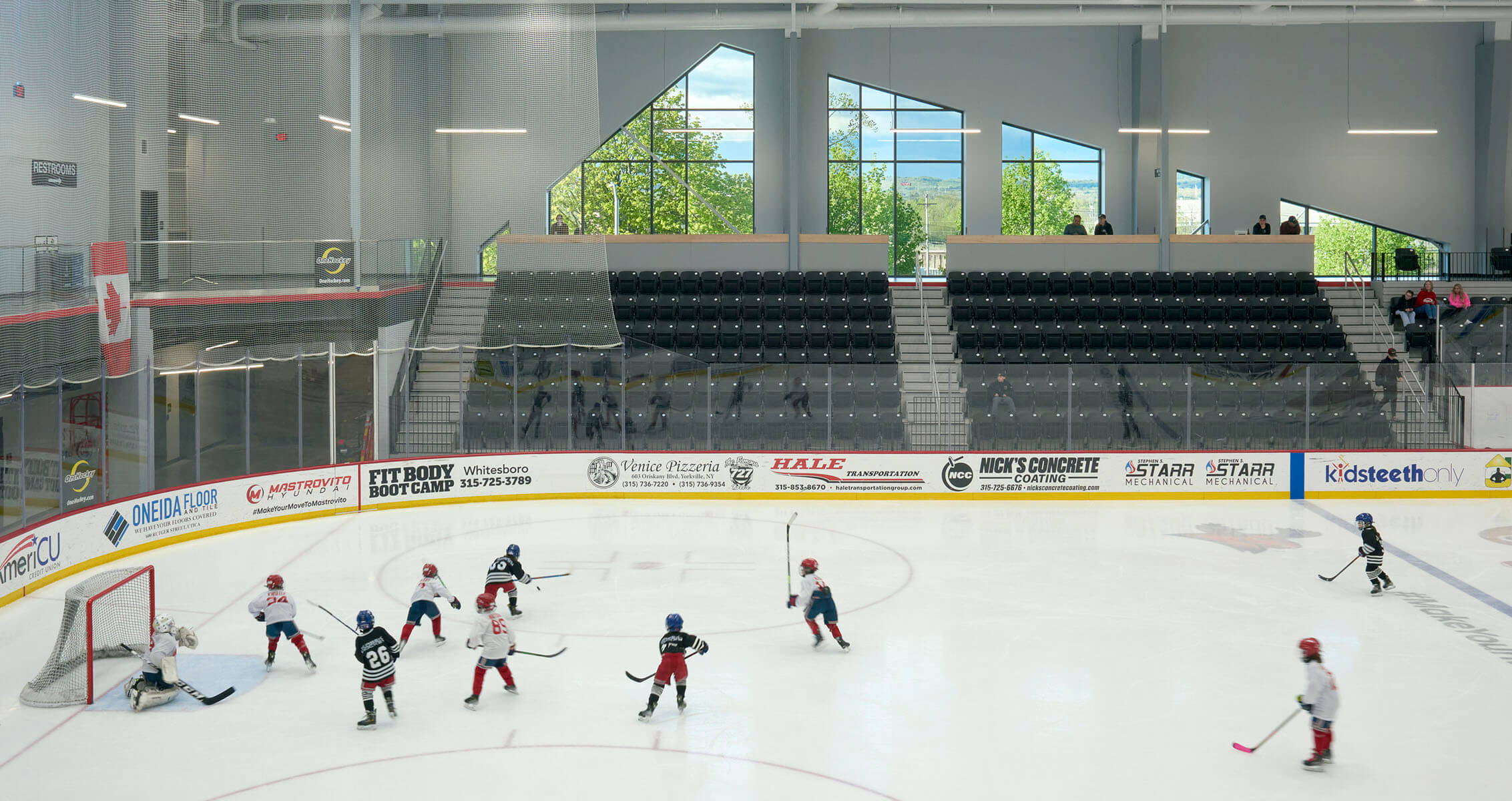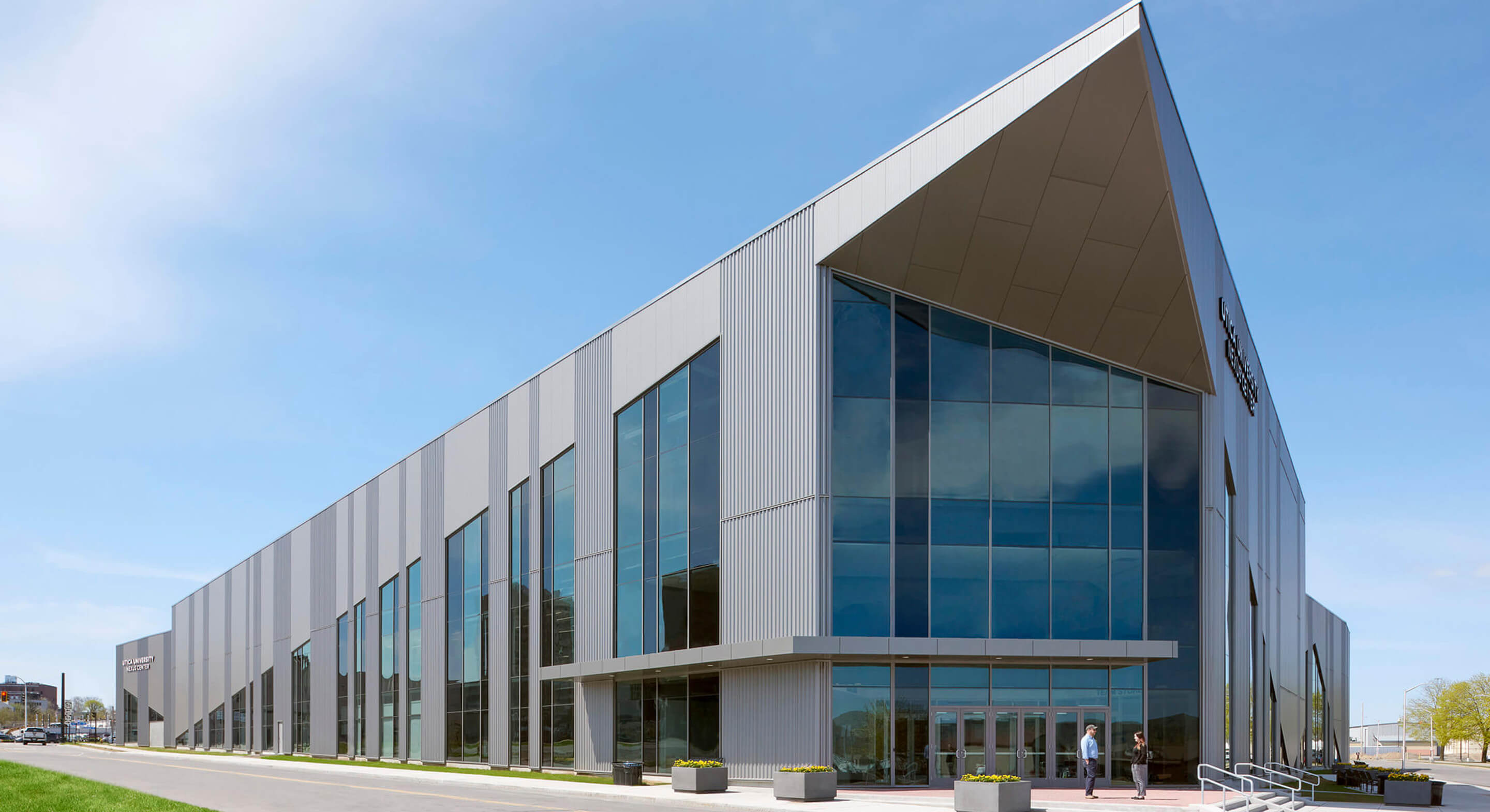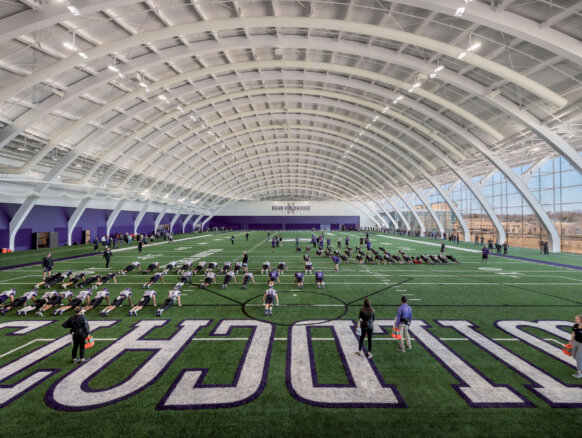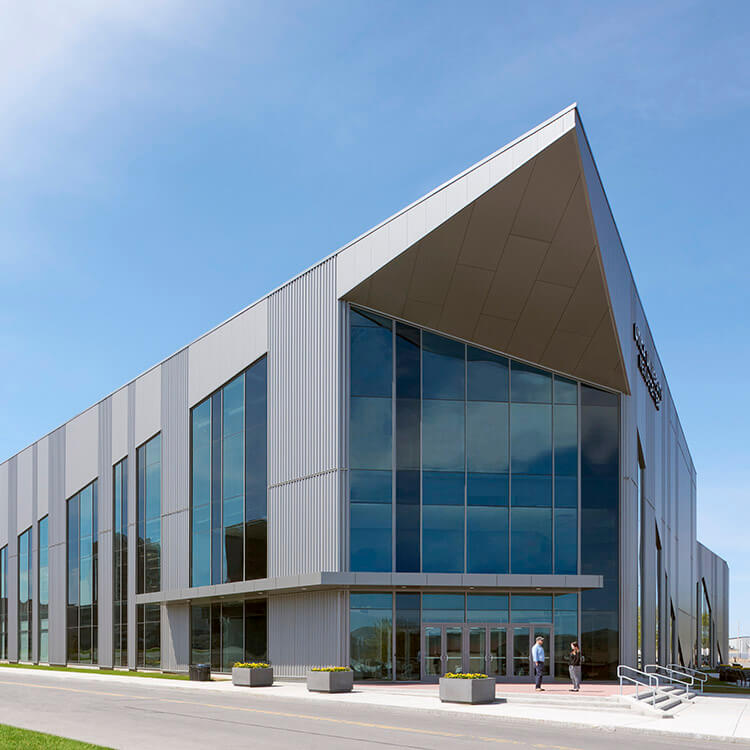
Utica University Nexus Center
The Mohawk Valley needed more than a new sports facility. It needed a place where the community could gather, young athletes could grow, and the downtown core could thrive. That vision became the Nexus Center, 170,000-square-foot hub of culture, competition, and connection in the heart of Utica, New York.
At its core, the Nexus Center is about access and opportunity. On any given day, the facility supports kids learning to skate, college students training for game day, and families cheering from the stands. With three NHL-sized rinks that easily convert to turf fields, the building accommodates a full calendar of hockey, lacrosse, and soccer, plus tournaments that draw visitors from across the U.S. and Canada. When events aren’t happening, the facility becomes a community recreation center for local schools, clubs, and residents.
Carl Annese, Former Chairman of the Upper Mohawk Valley Memorial Auditorium Authority
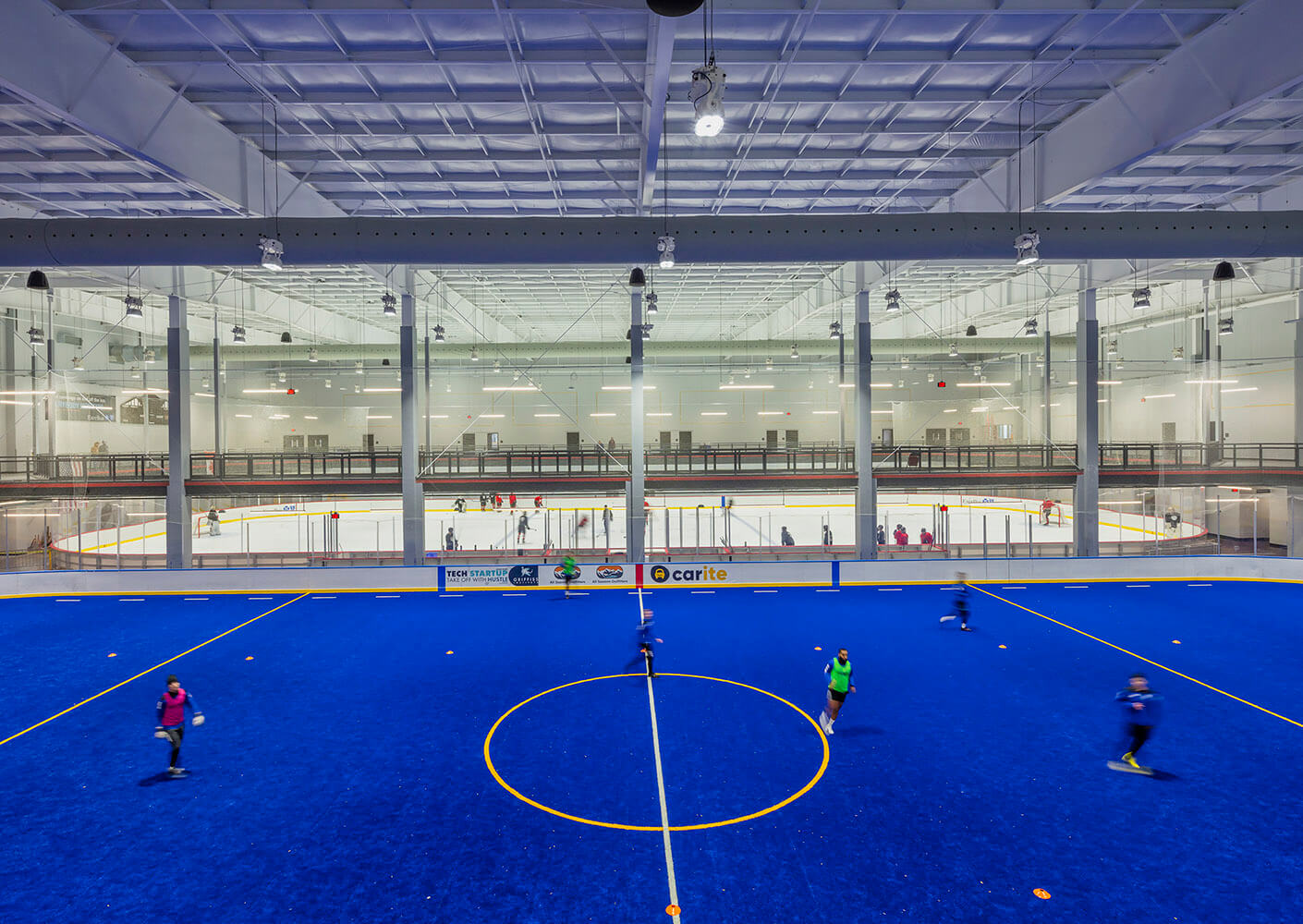
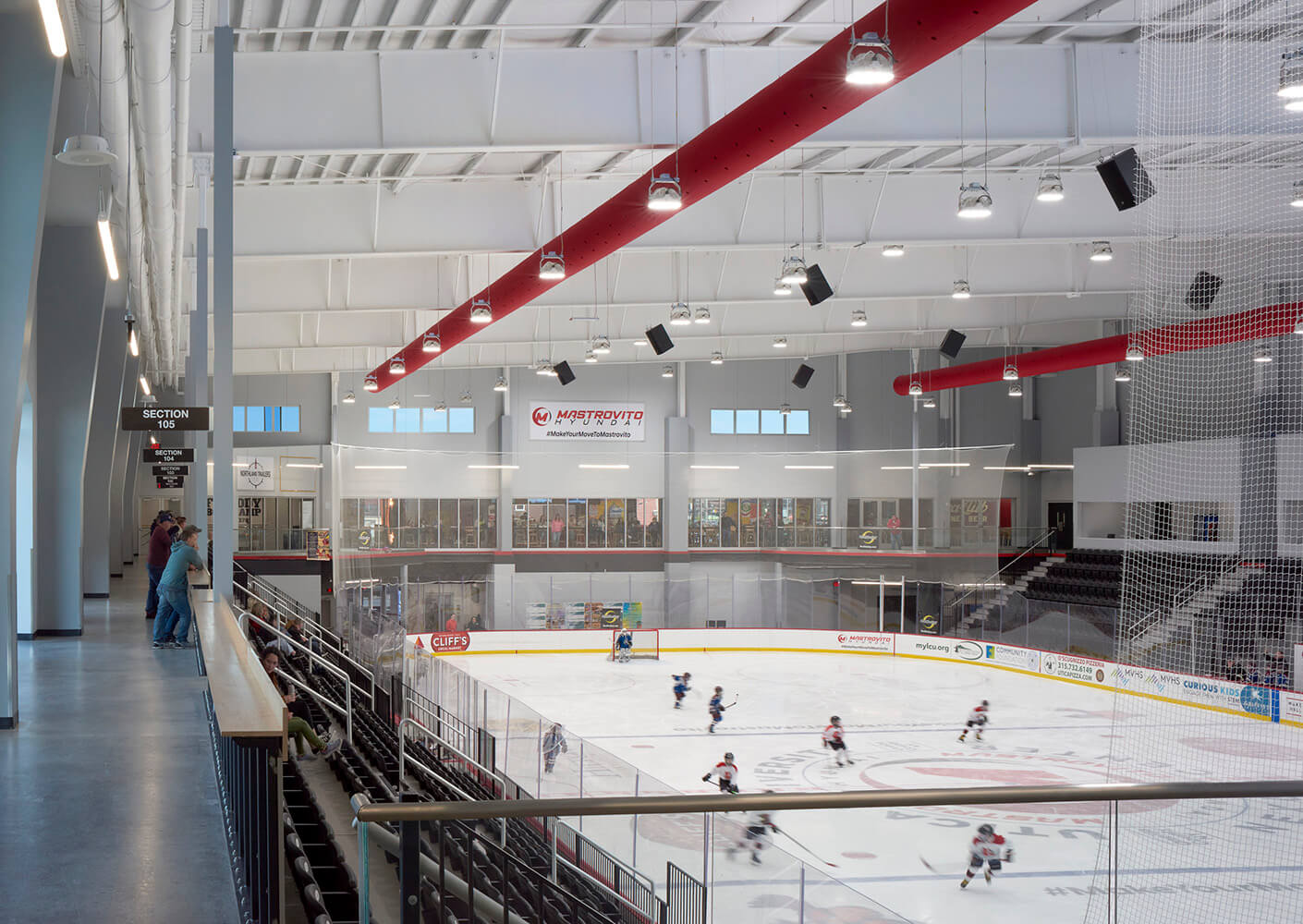
The design draws inspiration from the region’s history and heritage, especially the nearby Mohawk River and the traditions of the Mohawk people. The building’s sweeping metal and glass facade was imagined as a modern textile clean brushstroke of movement and form that wraps the entire city block. Interior views open up to downtown, creating a strong visual connection between the facility and the city.
The Nexus Center also honors what came before, connecting directly to the historic Utica Memorial Auditorium. Together, the two venues form a new civic hub for sport, learning, and celebration.
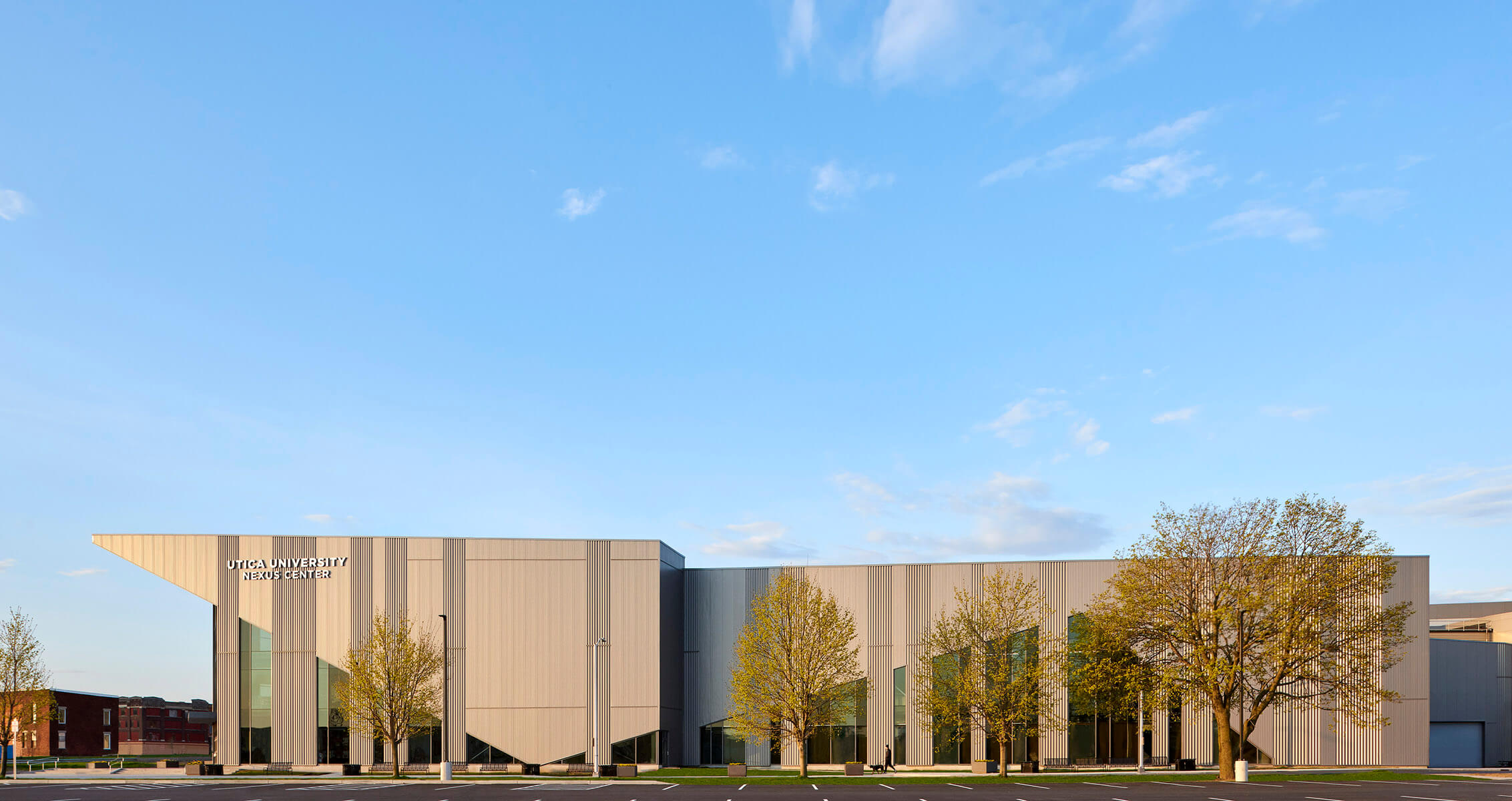
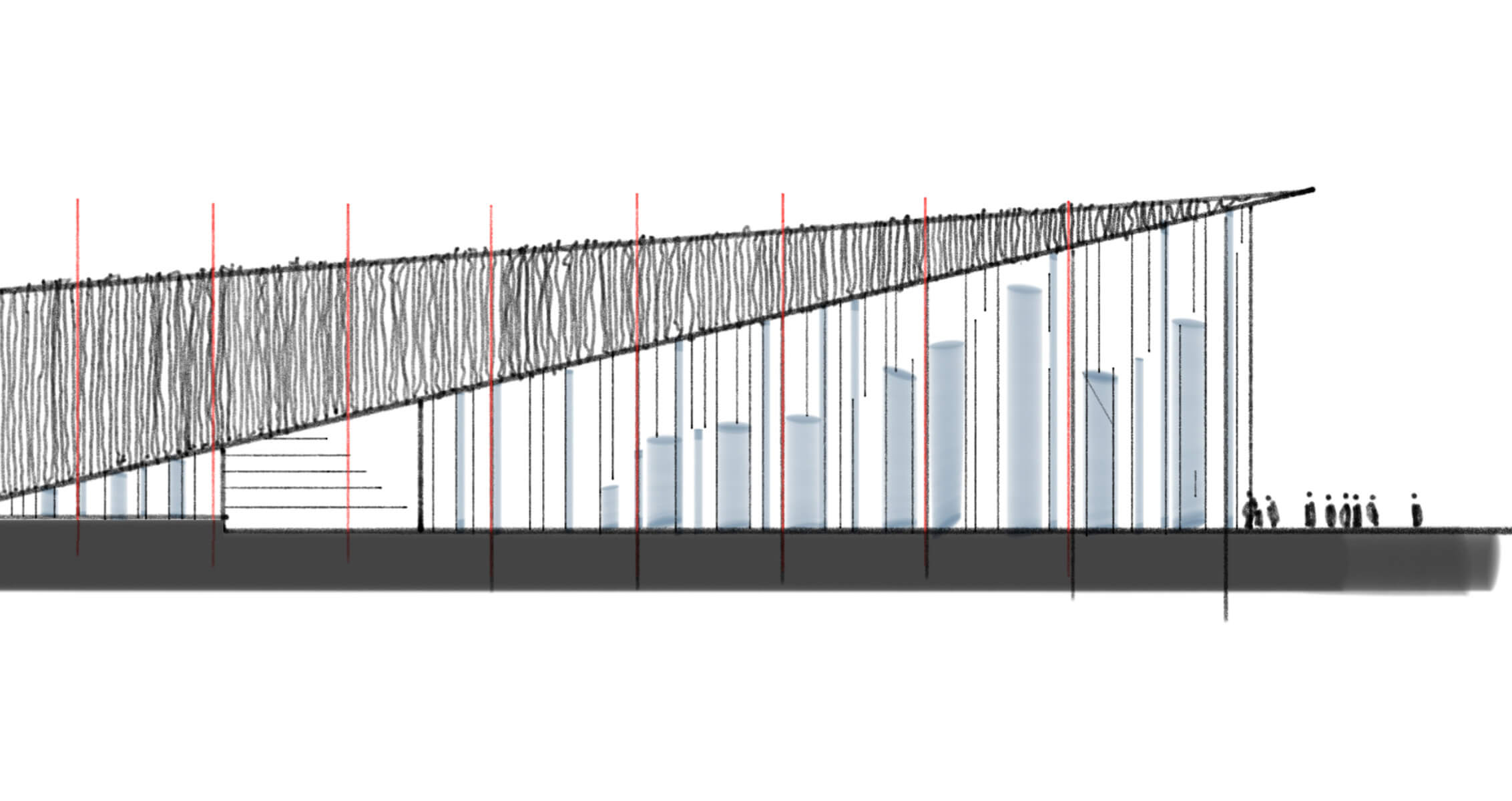
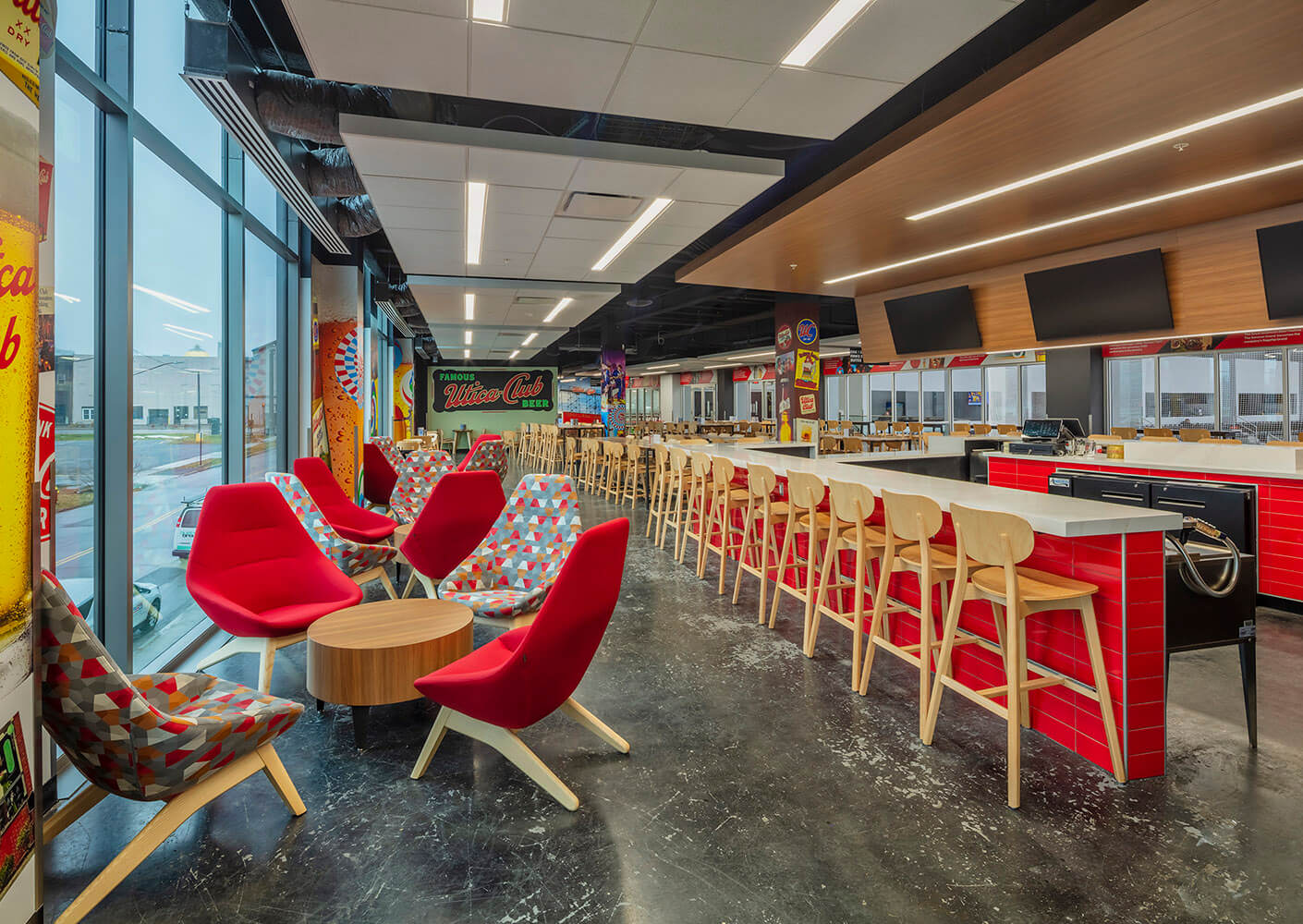
The Nexus Center serves as a daily destination for athletes, students, and community members. The facility includes locker rooms, classroom space, commercial offices, wellness suites, food and beverage venues, and community and university meeting rooms on the third floor. College and pro teams share space with youth leagues and high school players. Fans gather in lounge areas, while students in Utica University’s Sports Management program gain real-world experience by managing operations.
The design welcomes a wide range of users and creates an inclusive environment. It feels professional yet approachable, spacious enough for international competition, yet deeply connected to the local fabric.
